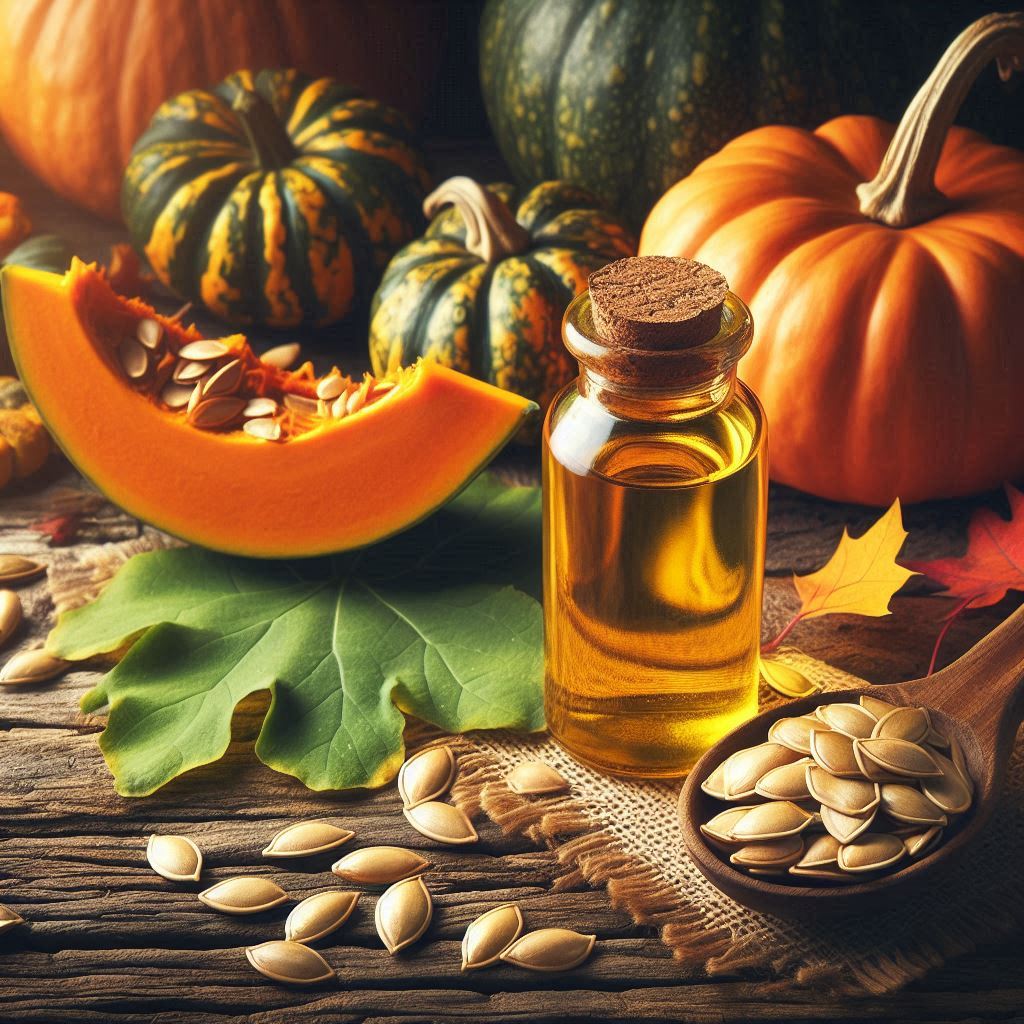Pumpkin Seed Oil: Extraction, Nutrients, and Health Benefits
Pumpkin seed oil (PSO) is a remarkable oil extracted from the seeds of various pumpkin varieties. Known for its rich nutrient profile, it is used in both cooking and medicinal contexts. In this blog, we will explore the extraction methods of pumpkin seed oil, its nutritional constituents, and the potential health benefits it offers. What is Pumpkin Seed Oil? You can derive pumpkin seed oil from the seeds of pumpkins, particularly the varieties Cucurbita pepo and Cucurbita maxima. This oil serves not only as a flavorful addition to meals but also as a nutrient-rich ingredient that can support overall health. Nutritional Composition Pumpkin seed oil is notable for its high content of unsaturated fatty acids. Among these, linoleic acid is the main component. Unsaturated fatty acids are beneficial for heart health and can help reduce bad cholesterol levels. In addition, pumpkin seed oil contains valuable nutrients like tocopherols (a form of Vitamin E), phytosterols, and phenolic acids. Extraction Methods The way pumpkin seed oil is extracted can affect its yield, composition, and quality. Conventional methods such as cold pressing and solvent extraction have been commonly used. However, new technologies are emerging, which are considered more effective and environmentally friendly. These novel techniques offer promising alternatives to traditional methods. They provide safer and more efficient ways to extract pumpkin seed oil, ensuring higher quality products. https://fuelforlife365.com/ Health Benefits Research indicates that pumpkin seed oil has various health benefits. Numerous in vitro (test-tube) and in vivo (live organism) studies have shown its potential in several areas: Using Pumpkin Seed Oil in Your Diet Incorporating pumpkin seed oil into your diet is easy. It has a rich, nutty flavor that enhances salads, pasta, and vegetables. You can also use it in dips or drizzle it over cooked dishes for added flavor and nutrition. However, it is best not to use it for frying, as high temperatures can damage its nutritional properties. Also Visit Here For More Conclusion Pumpkin seed oil is a versatile and nutrient-rich oil that can greatly benefit your health. Its extraction methods are evolving, leading to higher quality and more effective products. The oil’s rich content of unsaturated fatty acids, antioxidants, and other important nutrients makes it a valuable addition to a healthy diet. As research continues to unveil the benefits of pumpkin seed oil, incorporating it into your meals may help protect against various health issues. Whether you use it as a salad dressing or a drizzling oil for cooked dishes, pumpkin seed oil offers both flavor and remarkable health advantages. Embrace the benefits of pumpkin seed oil and discover how this simple ingredient can enhance your overall well-being!


